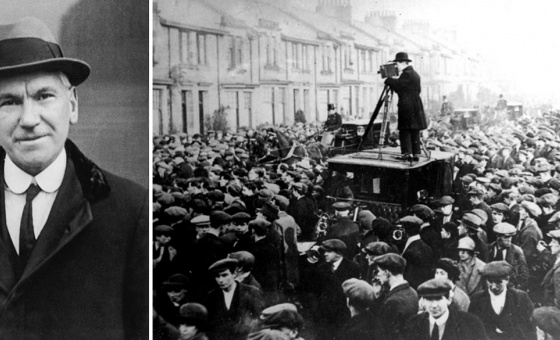This is the last article you can read this month
You can read more article this month
You can read more articles this month
Sorry your limit is up for this month
Reset on:
Please help support the Morning Star by subscribing here
RECENTLY I have been delighted to see the Communist Party take the issue of culture more seriously.
Raymond Williams argued that “the Labour Party and the unions had failed throughout even to see the cultural struggle as a major element in all political and economic struggles.”
There is much for Marxists to consider. The founders of Western Marxism, Gyorgy Lukacs and Antonio Gramsci, made huge contributions in this space as did our own Christopher Caudwell.
At the recent Joseph Arch commemorations, I had the pleasure of listening to James Crossley talking about how historical characters are reinterpreted over time.
He mentioned he was writing a biography of AL Morton. Morton is best known for his A People’s History of England (1938) that won him fame as one of the first attempts at writing English history from a Marxist standpoint. This was a work that, as Christopher Hill points out, would have been an astonishing achievement for a whole team of historians.
Morton is a remarkably clear writer with a deep affection for people, history and England. Many of his essays could have been written today, and he certainly pre-empts much of the work that came later by EP Thomson, Raymond Williams and Richard Hoggart that become the foundational works of cultural studies.
One person he speaks up for, who is almost impossible to read today, is John Ruskin. Morton says: “Today we begin with Marx and never reach Ruskin, and our socialism is perhaps the poorer for it.”
Ruskin’s complete works in the Ruskin Library at Lancaster University span 39 volumes. A few of his works still merit the effort of ploughing through his prolix prose style.
The first is The Nature Of Gothic, part of his three-volume The Stones Of Venice (1851-53). In it Ruskin argued that man-made articles should reveal rather than seek to conceal their origins and that individuality and roughness of workmanship were infinitely preferable to perfection and standardisation, in a free and just society.
Kelmscott Press reprinted The Nature Of Gothic in 1892 with William Morris writing the preface to what became a gospel of the Arts and Crafts Movement.
He states: “The essence of what Ruskin then taught was that the art of any period must of necessity be the expression of its social life.” He asserts that great art can only come from a “just and righteous society.”
Morton argues it was from Ruskin that Morris derived his deep moral and aesthetic revulsion at capitalist society.
Ruskin’s most important and probably most accessible work is Unto This Last, a remarkable set off articles published in 1860 in the Cornhill Magazine. The editor was William Makepeace Thackery and under pressure from his subscribers, he forced Ruskin to keep it short.
The title is a quotation from the parable of the workers in the vineyard (Matthew 20). However, the work is essentially a critique of “political economy,” which Ruskin argued was being passed off as an objective science when it was in fact an elaborate system of special pleading for capitalism in which the peculiar relations of bourgeoise society are elevated into eternal laws.
There is one part of Unto This Last which reads like the manifesto of the modern Fairtrade movement: “In all buying, consider first what condition of existence you cause in the producers of what you buy; secondly, whether the sum you have paid is just to the producer, and in due proportion, lodged in his hands,” says Ruskin.
Morris wrote a great essay on how he became a socialist and it contains a set of views that remain persuasive.
“Apart from a desire to produce beautiful things, the leading passion of my life has been and is a hatred of modern civilisation. What shall I say concerning its mastery and waste of mechanical power, its commonwealth so poor, its enemies of the commonwealth so rich, its stupendous organisation, for the misery of life! Its contempt of simple pleasures which everyone could enjoy but for its folly! Its eyeless vulgarity which has destroyed art, the one solace of labour! Think of it! Was it all to end in a counting-house on top of a cinder-heap.”
This is a contemporary struggle. Ruskin and Morris have long been the architects of choice for the mock-Tudor homes of what used to be called the stock-broker belt while working-class environments have become brutal, ugly and alienating. There is an alternative, public housing and our public spaces can be both functional and beautiful.
One city to have escaped the worst excesses of neoliberalism is Vienna — half of its housing is still social and half of that is owned by the City of Vienna, most famously the Gemeindebau public housing projects of the 1920s and early ’30s, the world famous “Red Vienna,” with absolutely no right to buy whatsoever — consequently the city has among the most egalitarian, and the best, housing of any city in the world.
Walter Benjamin argued that to politicise art is to recognise that it is fundamentally a product that exists within a specific socio-cultural context; communism thus “takes art seriously not just as a cultural product but as a cultural force.”












